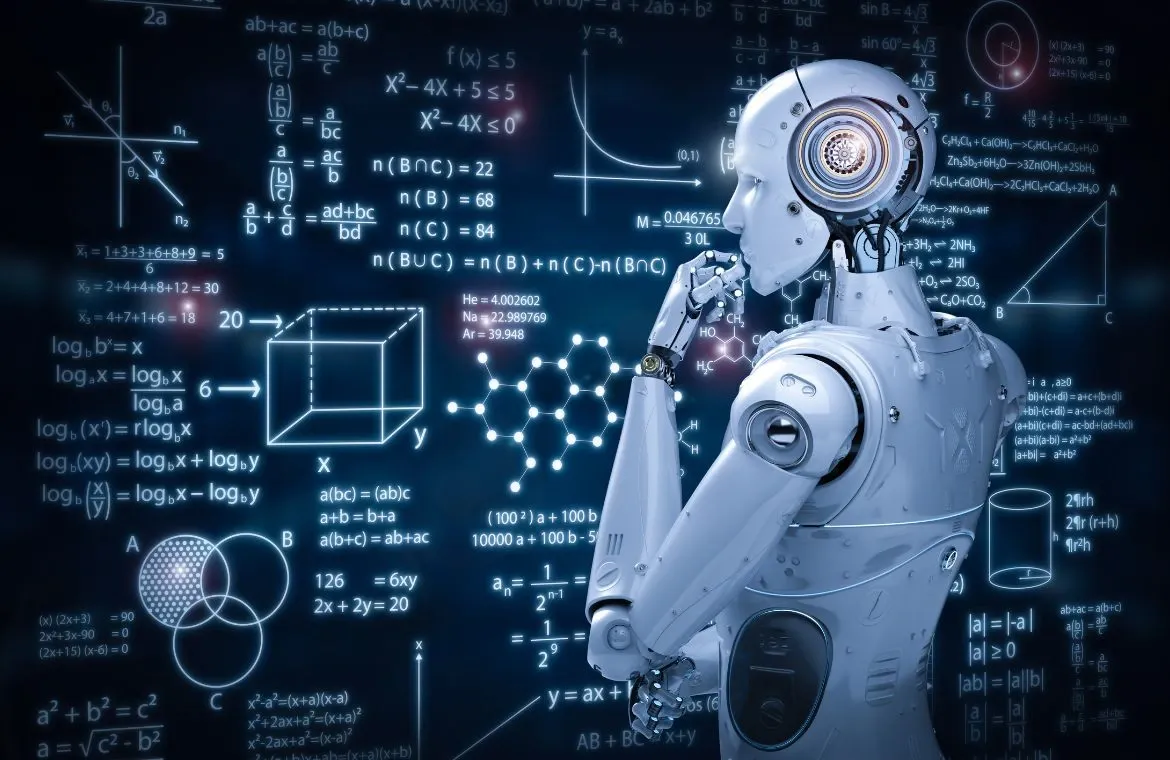Machine Learning Algorithms for Data Scientists

Whether it’s predicting stock market trends, detecting fraud, diagnosing diseases, or recommending your next binge-worthy series, machine learning algorithms are quietly at work behind the scenes, making sense of the chaos. They’re the secret ingredient that turns raw data into intelligent action.
"An algorithm is to a data scientist what a recipe is to a chef, as you may have the finest ingredients, but without the right recipe, the dish may never come together."
What are Machine Learning Algorithms for Data Scientists?
Machine learning algorithms are the foundations of modern data science. They work as finite sets of clear step-by-step instructions that machines follow to identify patterns and extract meaning from complex data sets. These computational procedures help systems learn from datasets, recognise patterns, and make predictions without explicit programming.
Also Read: Understanding Data Science: The What, Why, and How?
Why do Data Scientists need to understand them?
Data scientists must understand machine learning algorithms today because, Machine learning has reshaped data extraction methods by replacing traditional statistical techniques with automated methods.
This change lets data scientists analyse huge amounts of data and optimise processes that would take too much time and effort. Data scientists can solve complex data science problems when they know machine learning.
Types of Machine Learning Algorithms
Machine learning algorithms fall into three main types, each with its way of learning and real-life uses. Data scientists need to know these categories to pick the right techniques for their analytical challenges.
1. Supervised Learning
Supervised learning relies on labelled datasets to train algorithms that predict outcomes and spot patterns. The process needs input data (features) matched with correct output values (labels). Algorithms study these training pairs to understand patterns and make predictions about new data they haven't seen before.
The machine learns like a student with a teacher who provides questions and answers. It looks at labelled examples and their output labels to find patterns. The model gets better at making accurate predictions by tweaking its parameters based on how far off its guesses are from the actual values.
2. Unsupervised Learning
Unsupervised learning works differently from supervised learning because it uses unlabeled data without predefined categories or outcomes. These algorithms must find patterns and connections on their own without guidance.
Unsupervised learning serves three key functions:
- Clustering: Groups similar data points based on their natural similarities and differences
- Association: Finds relationships between variables in datasets (often used in market basket analysis)
- Dimensionality Reduction: Cuts down the number of features while keeping important information
This method works great for exploring data, segmenting customers, and finding hidden structures in complex datasets.
3. Reinforcement Learning
Reinforcement learning brings a fundamental change where algorithms learn the best behaviours by interacting with their environment. Instead of learning from examples, these agents learn by getting rewards or penalties for their actions.
Reinforcement learning has two broad categories:
- Model-based: The agent creates an internal picture of the environment to simulate outcomes
- Model-free: The agent learns straight from interactions without building an environment model
You'll find this type of learning in robotics, self-driving cars, gaming AI, and resource management systems.
Top 10 Machine Learning Algorithms for Data Scientists
Machine learning has evolved beyond simple regression techniques. Several sophisticated algorithms now stand out for their exceptional performance in a variety of applications. Data scientists can now tackle complex problems with better accuracy thanks to these powerful tools.
1. Linear Regression
Linear regression stands as a simple yet powerful data analysis technique. It predicts continuous values by finding relationships between dependent and independent variables.
The two main types of linear regression are:
- Simple linear regression: Shows relationships between two variables, like how rainfall affects crop yield or how age relates to children's height
- Multiple linear regression: Works with one dependent and several independent variables to show complex relationships such as how rainfall, temperature, and fertiliser together affect crop yield
2. Logistic Regression
The name might be misleading, but logistic regression actually classifies data rather than performing regression. It estimates discrete values, usually binary outcomes, based on given independent variables.
Logistic regression works well in many ground applications:
- Banks detect fraudulent transactions and evaluate loan risks
- Manufacturing plants predict when machine parts might fail
- Medical teams assess disease risks in patients
- Digital marketers forecast how users will respond to ads
3. Decision Trees
Decision trees split data into branches based on feature values. This creates a flowchart-like structure for classification or regression tasks. The algorithm splits data at each node by using features that give maximum information gain.
These trees work well in healthcare for predicting diagnoses, financial services for assessing credit risk, and manufacturing for quality control. Their interpretability and minimal preprocessing needs make them particularly useful.
4. Random Forest
Random Forest builds on decision trees by creating an ensemble of trees trained on random data subsets. The final prediction comes from averaging individual tree outputs for regression or majority voting for classification.
This approach reduces overfitting significantly while staying interpretable. Banks detect fraud with it, healthcare systems predict diseases, and e-commerce platforms segment customers effectively.
5. Support Vector Machines (SVM)
SVMs find the optimal hyperplane that maximises the margin between different classes in high-dimensional space. These machines solve complex non-linear problems by transforming data into higher dimensions through kernel functions.
Text classification, image recognition, and bioinformatics applications benefit from SVMs, especially when clear margins exist between classes.
6. K-Nearest Neighbours (KNN)
KNN classifies new data points based on their k nearest neighbours' majority class in feature space. This user-friendly, non-parametric algorithm needs no training phase - it just stores training examples.
Recommendation systems, security system anomaly detection, and pattern recognition tasks use KNN effectively where similarity metrics matter.
7. K-Means Clustering
K-Means groups unlabeled data into k clusters by minimising within-cluster variance. Data points get assigned to the nearest centroid, then centroids recalculate until they stabilise.
Marketing teams use K-Means to segment customers. Document clustering systems model topics with it, and image processing applications quantize colours.
8. Gradient Boosting Machines
Gradient boosting creates weak learners (usually decision trees) that fix errors from previous models one after another. Each new model focuses on reducing the previous models' residual errors. This powerful ensemble technique wins predictive modelling competitions and excels at financial forecasting, web search ranking, and ecology studies.
9. Neural Networks
Neural networks copy the human brain's structure with connected neuron layers that transform input through weighted connections and activation functions. These networks adjust weights through backpropagation to reduce prediction errors. Image and speech recognition, natural language processing, and autonomous vehicles rely on neural networks, changing how computers handle unstructured data.
10. Reinforcement Learning
Reinforcement learning teaches agents optimal behaviours through environment interaction and feedback signals. These algorithms aim for long-term rewards instead of immediate outcomes, unlike supervised learning. Self-improving systems power autonomous robotics, game-playing AI, dynamic pricing systems, and customised education platforms.
Real-World Use Cases of Machine Learning Algorithms
Machine learning algorithms create measurable business value in companies of all sizes by solving complex real-life problems.
Healthcare: Diagnosis and treatment planning
ML algorithms classify tumours, detect bone fractures, and identify neurological disorders. Genetic research uses ML to identify markers that determine treatment responses, which leads to customised medication recommendations. To cite an instance, In Telangana and Nagpur, AI-based screening vans are detecting tuberculosis and breast/oral cancers early
Finance: Fraud detection and credit scoring
Financial institutions use ML to analyse big transaction datasets and flag suspicious activities immediately. AI-powered fraud detection systems spot patterns to distinguish between legitimate and fraudulent transactions. With UPI fraud cases on the rise, Indian banks are using ML models to detect suspicious patterns instantly and block fraudulent transfers.
Retail: Customer segmentation and recommendation engines
Retailers analyse customer behaviour, demographics, and engagement patterns with ML techniques. For example, Nykaa Virtual Beauty Advisor, Uses ML to recommend skincare/makeup based on skin type and preferences, driving higher repeat purchases and customer satisfaction.
How to Select the Right Algorithm?
Your machine learning project's success depends on picking the right algorithm. No algorithm works best in every situation. Your data science outcomes will improve with the right selection.
1. Understand your data type and structure
The first step is to get into your data's characteristics. Linear regression or decision trees work well with structured, simpler data that has few attributes. Deep neural networks suit complex data like images, text, or audio better. Your dataset's size, quality, and diversity will affect how well your algorithm performs.
2. Match the algorithm to the problem complexity.
Your business question should point you toward the right algorithm. Simple tasks need straightforward algorithms. Image recognition and other complex tasks need sophisticated models. The right match between your problem's complexity and the algorithm's capability gives optimal results without extra computing overhead.
3. Balance interpretability and accuracy.
Interpretability and accuracy create a fundamental trade-off. Decision trees and other simple models show their decision-making process clearly but might not perform as well. Complex "black-box" models deliver better accuracy but hide their internal workings. Healthcare and regulated industries need interpretable models to maintain trust and compliance.
Conclusion
Machine learning algorithms are like silent problem-solvers, working behind the scenes to power everything. They don’t just crunch numbers, they actually uncover patterns that humans might miss, turning raw data into meaningful action.
From forecasting crop yields in rural India to optimising urban transport networks, the explorers of India’s data landscape are shaping the future with each analytical decision they make and transforming India’s future.
Just as a master chef knows exactly which recipe will turn ingredients into a masterpiece, a data scientist must select the right algorithm to unlock insights. The IIT Madras Data Science and Machine Learning course and other Data Science Courses help build that recipe book of skills.
“Because, in the kitchen of data science, it’s not just about having the finest tools with you, it’s about blending them with the right method to create something truly extraordinary.”
Frequently Asked Questions
Q1. What are the main types of machine learning algorithms?
There are three primary types of machine learning algorithms: supervised learning, unsupervised learning, and reinforcement learning. Supervised learning uses labelled data to make predictions, unsupervised learning finds patterns in unlabelled data, and reinforcement learning learns through interaction with an environment.
Q2. How do data scientists choose the right machine learning algorithm?
Data scientists select algorithms by considering factors such as data type and structure, problem complexity, interpretability requirements, computational resources, and real-time constraints. The choice depends on the specific needs of the project and the nature of the data being analysed.
Q3. What are some common applications of machine learning in business?
Machine learning is widely used in various industries. In finance, it's applied for fraud detection and credit scoring. Retailers use it for customer segmentation and recommendation engines. In healthcare, it aids in diagnosis and treatment planning. Marketing teams leverage it for predictive analytics and churn prediction.

TalentSprint
TalentSprint is a leading deep-tech education company. It partners with esteemed academic institutions and global corporations to offer advanced learning programs in deep-tech, management, and emerging technologies. Known for its high-impact programs co-created with think tanks and experts, TalentSprint blends academic expertise with practical industry experience.



